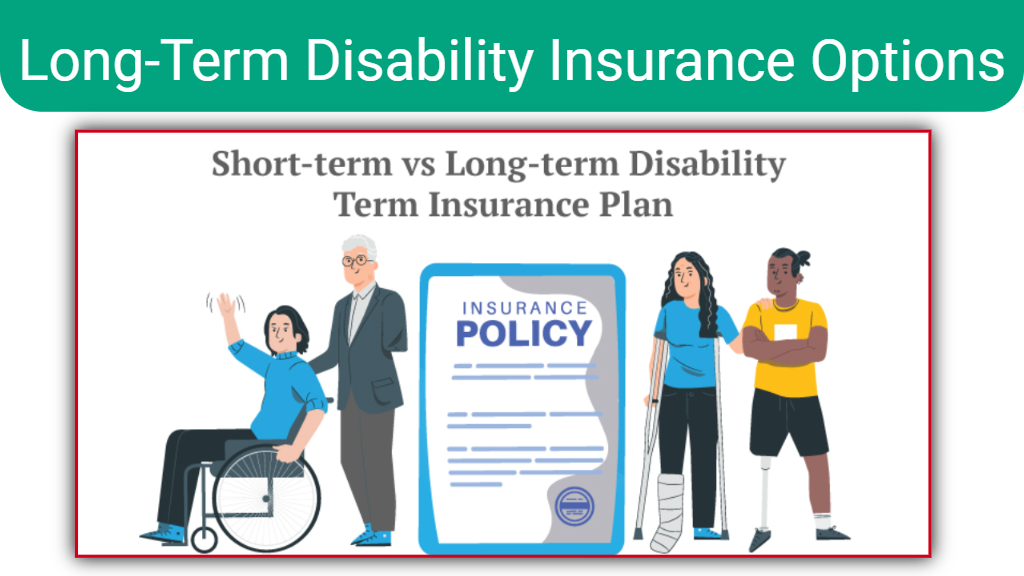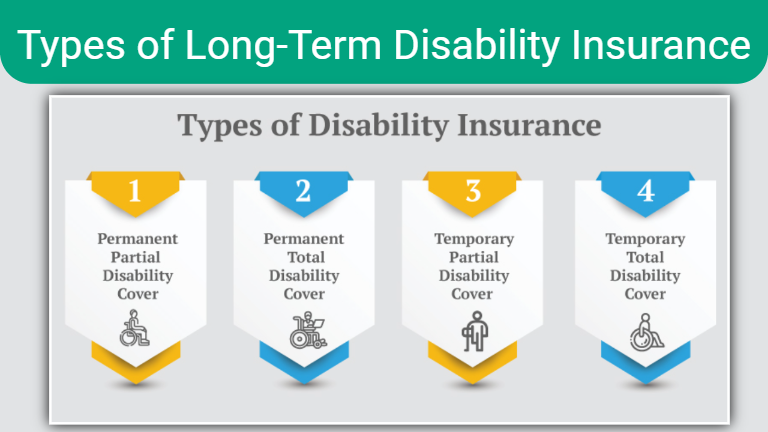Long-term disability insurance is a critical component of financial planning that provides income protection if you are unable to work due to a serious illness or injury.

It ensures that you can maintain your standard of living and meet financial obligations during a prolonged period of disability. This article explores the various long-term disability insurance options, their benefits, and tips for selecting the right policy to secure your financial future.
Understanding Long-Term Disability Insurance
Long-term disability (LTD) insurance is designed to replace a portion of your income if you become unable to work due to a disabling condition that lasts for an extended period, typically several months to years. Unlike short-term disability insurance, which covers disabilities lasting a few weeks to months, LTD insurance provides coverage for longer durations, often up to retirement age.
Types of Long-Term Disability Insurance

1. Group Long-Term Disability Insurance
Group LTD insurance is typically offered by employers as part of an employee benefits package. This type of coverage is often more affordable because the employer usually pays a portion of the premium, and the risk is spread across a large group of people.
Benefits:
- Lower Premiums: Group policies generally have lower premiums compared to individual policies.
- Convenient Enrollment: Enrollment is often automatic or requires minimal paperwork.
- Basic Coverage: Provides a foundation of income protection for employees.
Considerations:
- Coverage Limits: Benefits may be capped at a percentage of your salary, often around 60-70%.
- Portability: Coverage may end if you leave your job, unless you have the option to convert it to an individual policy.
2. Individual Long-Term Disability Insurance
Individual LTD insurance is purchased independently from an insurance company. This type of policy offers more customization and flexibility compared to group policies.
Benefits:
- Customizable Coverage: Tailor your policy to meet your specific needs and preferences.
- Portability: Coverage continues regardless of changes in employment status.
- Higher Benefit Limits: Potential for higher benefit amounts compared to group policies.
Considerations:
- Higher Premiums: Individual policies tend to have higher premiums.
- Underwriting Requirements: Approval may require a medical exam and detailed health information.
3. Supplemental Long-Term Disability Insurance
Supplemental LTD insurance is designed to enhance existing group coverage. It can be purchased to fill gaps in your employer-provided LTD insurance, ensuring more comprehensive income protection.
Benefits:
- Enhanced Coverage: Provides additional benefits on top of your group policy.
- Increased Benefit Amounts: Can raise the total disability benefit to a higher percentage of your income.
Considerations:
- Additional Cost: Requires paying an extra premium on top of your group policy.
- Coordination of Benefits: Ensure the supplemental policy coordinates with your existing coverage.
4. Specialty Long-Term Disability Insurance
Specialty LTD insurance is tailored for specific professions with unique risks, such as doctors, dentists, and attorneys. These policies often include features specific to the profession’s needs.
Benefits:
- Occupation-Specific Coverage: Provides benefits tailored to the unique risks and income potential of specific professions.
- Higher Benefit Amounts: Often offers higher benefit limits to match higher income levels.
Considerations:
- Higher Premiums: Specialty policies can be more expensive due to the increased risk associated with certain professions.
- Occupation Definition: Ensure the policy defines disability in terms that are favorable to your profession.
Key Features of Long-Term Disability Insurance Policies
1. Benefit Period
The benefit period is the length of time you will receive benefits if you become disabled. Common benefit periods include two years, five years, 10 years, or until retirement age. Choosing a longer benefit period provides more extended financial protection but may result in higher premiums.
2. Elimination Period
The elimination period, also known as the waiting period, is the time between the onset of the disability and when benefits begin. Common elimination periods range from 30 to 180 days. A longer elimination period can lower your premiums but requires you to cover expenses during that time.
3. Definition of Disability
Policies may define disability differently, affecting eligibility for benefits:
- Own Occupation: Provides benefits if you cannot perform the duties of your specific occupation.
- Any Occupation: Provides benefits only if you cannot perform any job for which you are reasonably qualified.
An “own occupation” policy is typically more expensive but offers more comprehensive coverage.
4. Non-Cancelable and Guaranteed Renewable
A non-cancelable policy means the insurer cannot cancel your policy or increase your premiums as long as you pay your premiums on time. Guaranteed renewable policies ensure that your coverage will be renewed each year, but premiums may increase with age.
5. Cost-of-Living Adjustment (COLA)
A COLA rider increases your benefit amount annually to keep up with inflation. This feature helps maintain the purchasing power of your benefits over time.
6. Residual or Partial Disability Benefits
These benefits provide partial payments if you can return to work part-time or at a reduced capacity due to a disability. This feature is important for those who may be able to work but not at their previous full earning potential.
Small Business Liability Insurance: A Comprehensive Guide
Homeowners Insurance for High-Risk Areas: What You Need to Know
Tips for Choosing the Right Long-Term Disability Insurance Policy
1. Assess Your Income Needs
Evaluate how much of your income you need to replace to maintain your standard of living. Consider your monthly expenses, debts, and future financial goals when determining the appropriate benefit amount.
2. Compare Policies
Shop around and compare policies from multiple insurers. Look at the benefit periods, elimination periods, definitions of disability, and additional features to find the best fit for your needs and budget.
3. Understand Policy Exclusions
Review the policy’s exclusions and limitations to understand what is not covered. Some policies may exclude certain medical conditions or limit coverage for disabilities resulting from specific activities.
4. Consider Riders and Add-Ons
Evaluate the value of optional riders and add-ons, such as COLA, residual benefits, and future increase options. These features can enhance your coverage and provide additional protection.
5. Work with an Insurance Professional
Consult with an insurance agent or financial advisor who specializes in disability insurance. They can provide personalized recommendations and help you navigate the complexities of selecting the right policy.
Conclusion
Long-term disability insurance is an essential safeguard against the financial impact of a prolonged illness or injury. By understanding the different types of policies available and carefully considering your coverage needs, you can select a policy that provides the best protection for your financial future. With the right long-term disability insurance in place, you can have peace of mind knowing that you are prepared for any unexpected challenges that may come your way.
Pet Insurance for Dogs and Cats: Protecting Your Furry Friends
Long-Term Disability Insurance Options: Securing Your Financial Future
Small Business Liability Insurance: A Comprehensive Guide
Comprehensive Auto Insurance Coverage: Everything You Need to Know